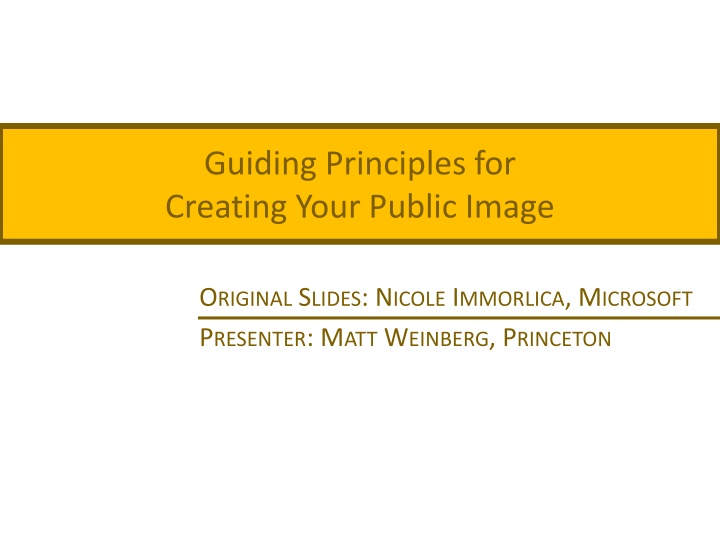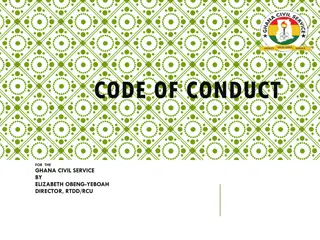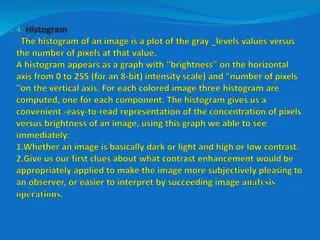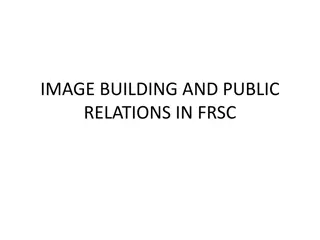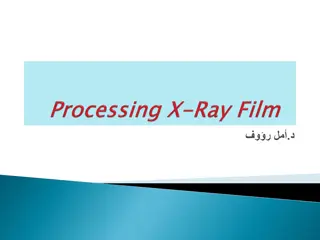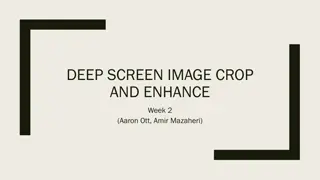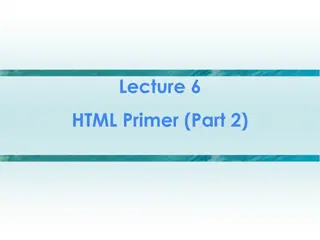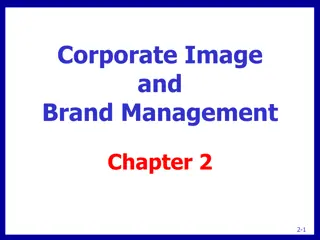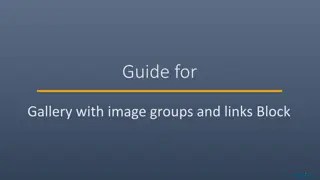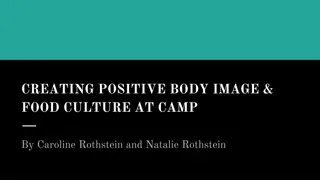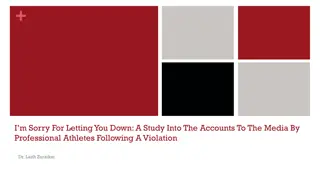Principles for Crafting Your Public Image
Learn essential guiding principles for enhancing your public image, including writing best practices, presentation tips, and strategies for networking effectively. Understand the significance of engaging content creation and the importance of conveying your work's awesomeness to your audience.
Download Presentation

Please find below an Image/Link to download the presentation.
The content on the website is provided AS IS for your information and personal use only. It may not be sold, licensed, or shared on other websites without obtaining consent from the author.If you encounter any issues during the download, it is possible that the publisher has removed the file from their server.
You are allowed to download the files provided on this website for personal or commercial use, subject to the condition that they are used lawfully. All files are the property of their respective owners.
The content on the website is provided AS IS for your information and personal use only. It may not be sold, licensed, or shared on other websites without obtaining consent from the author.
E N D
Presentation Transcript
Guiding Principles for Creating Your Public Image ORIGINAL SLIDES: NICOLE IMMORLICA, MICROSOFT PRESENTER: MATT WEINBERG, PRINCETON
Themes and Disclaimers. 1. Disclaimer: Most of the advice given in this talk is subjective: mix of advice from Nicole and Matt. 1. Nicole and Matt are both in CS Theory. 2. Recurring Theme: Always understand why. 1. Do look to others for examples of good talks/websites/papers/etc. 2. Don ttry to follow the rules without understanding why. 3. Will try to ask questions.
outline. Several aspects contribute to your public image. 1. Papers you write. 2. Reviews you write. 3. Talks/Posters you present. 4. Your website. 5. In-person networking. This is a non-exhaustive list. Overview guiding principles/sample advice for each.
Writing Principles Main goals: Engage/entertain the reader. Convince them your work is awesome (and correct). Everything else is secondary. I really mean this! View everything through this lens. No formatting requirements (although norms exist). Next several slides break down how Nicole/I normally try to convince the reader our work is awesome. But these are not hard/fast rules. Ask why!
outline. 1. Title: phrase indicating what you did 2. Abstract: concise description of what you did 3. Introduction: motivate and informally define problem, emphasize intuition and key contributions 4. Related Work: how your work fits with the literature 5. Model: the mathematical setting you consider 6. Results: statement, important/interesting proofs body 6. Appendix: remaining proofs, minor extensions
title. Purpose: Briefly indicate why someone might be interested in reading your paper. Example: Is it OK to be catchy/funny? Sure! If it is also descriptive. Of the People: Voting is more Effective with Representative Candidates, Cheng, Dughmi, and Kempe, EC 2017. Prophet Inequalities made Easy: Stochastic Optimization by Pricing non-Stochastic Inputs, Dutting, Feldman, Kesselheim, Lucier, FOCS 2017.
title. Good Bad Descriptive (but brief) Vague
title. Bad: Information Aggregation in Social Networks, Feldman, Immorlica, Lucier and Weinberg, 2014, working paper. Good: Reaching Consensus via non-Bayesian Asynchronous Learning in Social Networks, Feldman, Immorlica, Lucier and Weinberg, APPROX 2014.
title. Purpose: Briefly indicate why someone might be interested in reading your paper. Example: Why is vague bad? Information Aggregation in Social Networks. Is it a theory paper? Empirical study? No idea what makes it different from the 100,000 other papers on information aggregation in social networks.
abstract. Purpose: Help someone understand what s in the paper (normally targeted at an expert), and whether they should read more. Example: Should I sell the main results? You could state objectively why the main result is interesting, so an expert knows what s the point. You shouldn t go overboard, you have an entire introduction for that. E.g. This is the first constant-factor approximation.
abstract. Good Bad concise wordy fact-based salesmanship accurate over-claiming identifies keywords inaccurate terminology Pet Peeve: abstracts that are really introductions.
abstract (bad). In a social learning setting, members of a society share their experiences to help others make better choices. Following the established path can boost an individual s utility but it can hurt the society as a whole since other options of higher value may never be explored. We show that when the population is diverse, this issue can be avoided as people may not be satisfied with the available choices and look for alternatives. High diversity, though, comes at a cost as past experiences become less valuable.
abstract (bad). We model these situations in a standard setting of consumer search introduced by Weitzman and study how different diversity levels compare with each other. We and quantify how the socially optimal diversity level changes . Moreover, while high diversity can lead to anarchy and confusion in typical situations, we show that it can be really beneficial in settings where society may accidentally uncover a unanimously accepted hidden gem.
abstract (good). We introduce a general model of bandit problems in which the expected payout of an arm is an increasing concave function of the time since it was last played. We first develop a PTAS for the underlying optimization problem of determining a reward-maximizing sequence of arm pulls. We then show how to use this PTAS in a learning setting to obtain sublinear regret.
introduction. Purpose: Serves a few purposes, tricky to balance. Get the reader excited to read the rest of the paper. Tell a skimmer what s cool about the paper. In both cases, focus on whyit s cool. Example: Should I sell the main results? Absolutely! Don t be afraid to tell the reader exactly why it s cool. (From a selfish perspective: don t be afraid to tell the reviewer exactly what they should state as the main contributions in their review).
introduction. Good Bad motivation from practice or existing literature flimsy stories or cartoon realities place results in context abstracts of related work identify take-aways and key intuition overly-precise statement of results and techniques Pet Peeve: Laundry lists of results with no motivation.
introduction. Purpose: Serves a few purposes, tricky to balance. Get the reader excited to read the rest of the paper. Tell a skimmer what s cool about the paper. In both cases, focus on whyit s cool. Example: Should I overview techniques? Only do so to emphasize a why. Ex: We first use a reduction of XYZ, then Chernoff bounds, then some calculus contributes nothing. The key to our approach is the recent reduction of XYZ, developed for an unrelated problem.
introduction. Purpose: Serves a few purposes, tricky to balance. Get the reader excited to read the rest of the paper. Tell a skimmer what s cool about the paper. In both cases, focus on whyit s cool. Example: Should I overview techniques? Most theory papers choose to do this. Not required. Helpful if there is something exciting/digestible/etc. Really not helpful if the reviewer can t understand it. Always ask: what would a reader get from this?
Related work. Purpose: Provide context for your work. Most related stuff (ideally) already covered in intro. Also to assign scientific credit for prior work.
related work. Good Bad comprehensive skimpy describes connections reads like a list cites work from multiple fields unaware of related literature Pet Peeve: sections that read like a list of abstracts!
Related work. Purpose: Provide context for your work. Most related stuff (ideally) already covered in intro. Also to assign scientific credit for prior work. Example: How much detail should I give? Enough to make your point! Ex: Cai and Daskalakis give a PTAS for a single unit- demand buyer with independent MHR item values, to the optimal deterministic item pricing. Useful if you give a PTAS for a related problem. Not useful just because you study pricing.
Related work. Purpose: Provide context for your work. Most related stuff (ideally) already covered in intro. Also to assign scientific credit for prior work. Example: How much detail should I give? Enough to make your point! Ex: Works such as [CaiD11, ] also provide approximations in different models to ours. Useful if you study unrelated pricing problem. Not enough if reviewer might reasonably wonder what your work contributes over CaiD11.
Model. Purpose: Start being formal. Most intuition (ideally) already given in intro. Need to be precise, but also clear.
model. Good Bad notation consistent with existing norms overloaded or excessive notation covers limited prelim results/background contains major theorem statements and proofs rigorous, yet clear overly formal, or imprecise
Model. Purpose: Start being formal. Most intuition (ideally) already given in intro. Need to be precise, but also clear. Example: Should I give an example? Sure! If it serves a purpose. If complicated definitions, to illustrate definitions. If simple, no point. To illustrate subtle counter-intuitive properties. To illustrate special case of main proof ideas.
Model. Purpose: Start being formal. Most intuition (ideally) already given in intro. Need to be precise, but also clear. Example: Should I give an example? The buyer s utility is v p. So for example, if v = 5 and p = 1, the buyer s utility is 4. Useless! The buyer s utility is f(v) g(p), for f,g convex. Observe that our model captures quasi-linear utilities (v-p) when f(v) = v and g(p) = p. We will use this as a running example to illustrate the main ideas. Helpful!
Results/Proofs. Purpose: Thought experiment: Do I want the reviewer the read this? Yes, try to fit in body. No, put in appendix.
results. Good Bad intuition in main text list of theorems/proofs interesting proofs that build intuition boring proofs included because they re short illustrative examples instead of tedious proofs long unintuitive proofs
Results/Proofs. Purpose: Thought experiment: Do I want the reviewer the read this? Yes, try to fit in body. No, put in appendix. Example: Should I include complete proofs in the body? Sure! If full details are engaging. Sure! If full details resolve an interesting subtlety. No, if details are tedious.
Results/Proofs. Purpose: Thought experiment: Do I want the reviewer the read this? Yes, try to fit in body. No, put in appendix. Example: Overview entire proof in body? Don t leave reviewer confused, but If back half of proof is hard, but unilluminating , OK to summarize in a few sentences and move on.
Results/Proofs. Purpose: Thought experiment: Do I want the reviewer the read this? Yes, try to fit in body. No, put in appendix. Example: What about a subtle proof? Is the subtlety engaging/illuminating, or just hard ? If engaging, try to explain in body. If just hard , OK to state subtlety, but move on.
Results/Proofs. Purpose: Thought experiment: Do I want the reviewer the read this? Yes, try to fit in body. No, put in appendix. Example: Is it OK to have only 13 pages (for EC)? Sure! If 13 pages of exciting material, and 20 pages of calculations, break it into 13+20. But, 5 remaining pages are opportunity to be extra clear, overview additional connections, etc.
Results/Proofs. Purpose: Thought experiment: Do I want the reviewer the read this? Yes, try to fit in body. No, put in appendix. Guiding Principle: The entire body should be engaging. If you re bored writing, reviewer will be bored reading. Make it exciting! Or maybe it belongs in appendix. Try to make body as effortless to follow as possible. If ideas too complex, distill main digestible aspects.
Appendix. Purpose: Verify details that aren t necessarily engaging. Yes, very few people will read the appendix, but Details matter. Style suggestions: Appendix should be easy to read. It does not need to be engaging/stellar-ly written. Appendix should be easy to navigate. Huge pet peeve: appendices with serious errors which were obviously never proofread.
appendix. Good Bad clean to follow, but perhaps not engaging unreadable no pointers to/from body disorganized
impact. You will be judged by the quality of your review. People who read your review: Basically everyone you re meeting through this workshop (through the PC). Every visibility opportunity counts! For some PC members, this may be the first time they see your name. Make a good first impression!
purpose. Your job is not to directly decide whether to accept/reject the paper. Your job is to give arguments/evidence/information to the PC so they can decide whether to accept/reject. Parse remaining advice in this context.
content. Briefly describe main results. Should contain enough context to explain why authors think its exciting. Thought experiment: Would the authors agree? This is not the place to disagree with authors. Excellent: So clear that PC doesn t need re-read intro. Bad: PC needs to read entire intro, ignore your summary.
content. List major concerns. Is there an error in a proof, is the result a trivial generalization of existing work? (rare) Excellent: I might be misunderstanding something, but as stated, it seems that Theorem 2 is false. Here is a sketch of a counterexample. Is it possible that the authors meant to place additional assumptions? Point: You may be about to kill the paper. If it needs to be done, it needs to be done. But be thoughtful.
content. List major concerns. Is there an error in a proof, is the result a trivial generalization of existing work? (rare) Bad: Theorem 2 is false, integral might diverge. (Often resolved by: It is easy to verify that if integral diverges, results still hold with notational updates. ). Point: Totally valid minor concern to be rigorous with divergence (and this should be raised). But don t kill papers for oversights which can be easily resolved.
content. Form subjective evaluation. Quality of results, general interest in techniques, quality of presentation. This is the time to disagree with the authors! Results: (In your opinion) What makes the results significant (or not)? Is there any context that the PC needs to appreciate?
content. Form subjective evaluation. Quality of results, general interest in techniques, quality of presentation. This is the time to disagree with the authors! Results: Rough scale to have in mind: So strong it doesn t matter how it s proved. Strong. Motivated enough if the techniques are awesome. Extremely specialized or toy.
content. Form subjective evaluation. Quality of results, general interest in techniques, quality of presentation. This is the time to disagree with the authors! Techniques: (In your opinion) Will they help you/others solve problems? Did you find them engaging/illuminating? Don t ask: How much hard work? Trivial proofs are bad because aren t engaging, don t help others, notbecause they re not hard enough. But simple, engaging, thoughtful proofs are great!
content. Form subjective evaluation. Quality of results, general interest in techniques, quality of presentation. This is the time to disagree with the authors! Techniques: Rough scale to have in mind: Super interesting, loved reading it even if results meh. A strength. Enjoyed reading, but not a strength. Trivial or entirely (hard but) tedious calculations.
content. Form subjective evaluation. Quality of results, general interest in techniques, quality of presentation. This is the time to disagree with the authors! Presentation: (In your opinion) Did the body back up the sale of the intro? Was it a pleasure to read? Do you understand everything you want to? Do you understand what the authors want you to?
content. Form subjective evaluation. Quality of results, general interest in techniques, quality of presentation. This is the time to disagree with the authors! Presentation: Rough scale to have in mind Truly a pleasure to read. (could help tie-break). Fine. I was truly miserable reading. (could kill paper).
content. Briefly describe main results. Should contain enough context to explain why authors think its exciting. List major concerns. Is there an error in a proof, is the result a trivial generalization of existing work? (rare) Form subjective evaluation. Quality of results, general interest in techniques, quality of presentation. Recommendation: Accept? Enjoy it? Why or why not?
Presentation Principles (and poster principles)
additional disclaimer. Numerous presentation styles can be successful. (Ex: Nicole and I disagree on some points). (Ex: In 2019, I learned that Ariel and I disagree on even more points). Concrete tips are my/Nicole s suggestions. But, general principles are universal: Your goal is to engage the audience. Everything else is just subjective tips to achieve this. Constantly remind yourself of this during prep. (And prep a lot!).
